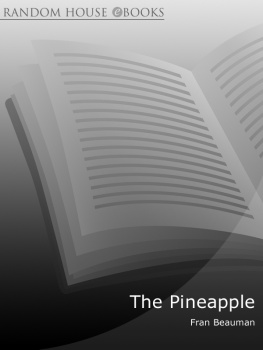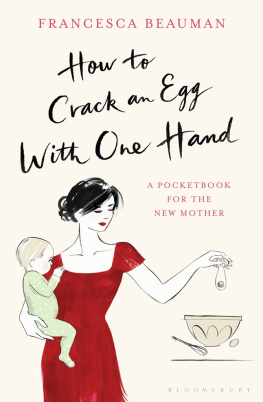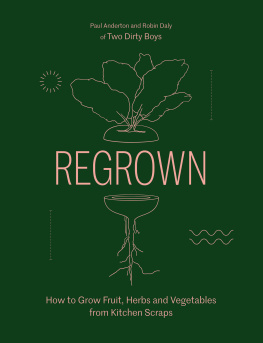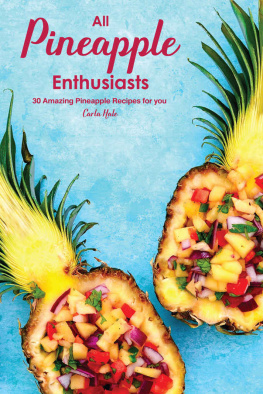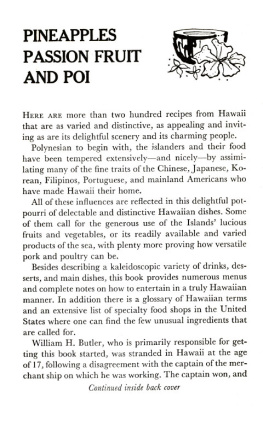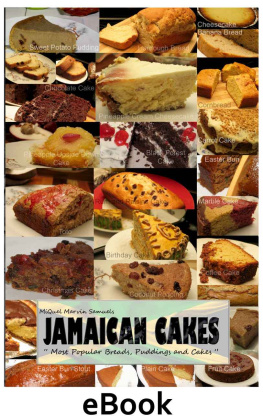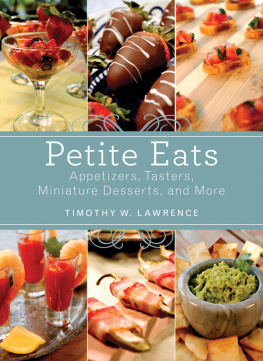THE PINEAPPLE
Fran Beauman graduated with a first class degree in History from Cambridge and now writes and presents for television. Her passion for pineapples began with a childhood visit to the pineapple-shaped garden retreat at Dunmore Park in Scotland and has taken her across the world. This is her first book

1. A pineapple, by Johann Christoph Volckamer, 1708.
FRAN BEAUMAN
The Pineapple
King of Fruits

This eBook is copyright material and must not be copied, reproduced, transferred, distributed, leased, licensed or publicly performed or used in any way except as specifically permitted in writing by the publishers, as allowed under the terms and conditions under which it was purchased or as strictly permitted by applicable copyright law. Any unauthorised distribution or use of this text may be a direct infringement of the authors and publishers rights and those responsible may be liable in law accordingly.
Version 1.0
Epub ISBN 9781446444689
www.randomhouse.co.uk
Published by Vintage 2006
2 4 6 8 10 9 7 5 3 1
Copyright Fran Beauman 2005
Fran Beauman has asserted her right under the Copyright, Designs and Patents Act 1988 to be identified as the author of this work
This book is sold subject to the condition that it shall not, by way of trade or otherwise, be lent, resold, hired out, or otherwise circulated without the publishers prior consent in any form of binding or cover other than that in which it is published and without a similar condition including this condition being imposed on the subsequent purchaser
First published in Great Britain in 2005 by Chatto & Windus
Vintage
Random House, 20 Vauxhall Bridge Road,
London SW1V 2SA
Random House Australia (Pty) Limited
20 Alfred Street, Milsons Point, Sydney,
New South Wales 2061, Australia
Random House New Zealand Limited
18 Poland Road, Glenfield,
Auckland 10, New Zealand
Random House (Pty) Limited
Isle of Houghton, Corner of Boundary Road & Carse OGowrie,
Houghton, 2198, South Africa
Random House Publishers India Private Limited
301 World Trade Tower, Hotel Intercontinental Grand Complex,
Barakhamba Lane, New Delhi 110 001, India
The Random House Group Limited Reg. No. 954009 www.randomhouse.co.uk/vintage
A CIP catalogue record for this book is available from the British Library
ISBN 9780099469445 (from Jan 2007)
ISBN 0099469448
Contents
Illustrations
Colour Plate Section
(Rijksmuseum).
(Bridgeman Art Library).
(Amsterdam Historisch Museum).
(Bridgeman Art Library).
(Colonial Williamsburg Foundation).
(Landmark Trust).
(British Museum).
(Bridgeman Art Library).
(Dole Archives).
(National Archives).
(Charles Francis).
(Chris Moore).
Illustrations in the text
(British Library).
(Duane Bartholomew).
(Bridgeman Art Library).
(Huntingdon Library, San Marino, California).
(Bridgeman Art Library).
(British Library).
(British Library).
(Wageningen UR Library).
(British Library).
(British Library).
(British Museum).
(British Library).
(British Museum).
(Ham House, The National Trust/Jonathan Button).
(British Library).
(British Library).
(Bridgeman Art Library).
(Colonial Williamsburg Foundation).
(Colonial Williamsburg Foundation).
(Gardeners Chronicle).
(Science and Society Picture Library).
(Illustrated London News).
(V&A Images/Victoria and Albert Museum).
(Mary Evans Library).
(Mary Evans Library).
(Frank Leslies Illustrated Newspaper).
(Colonial Williamsburg Foundation).
(Andy Suckling).
(Frank Leslies Illustrated Newspaper).
(Dole Archives).
(Dole Archives).
(Dole Archives).
(Dole Archives).
(Barnsley Metropolitan Borough Council).
(Getty Images).
(Solo Syndication).
(Getty Images).
Preface
It is 9.30 at night on a drizzly Sunday evening in October. Taj Stores, a Bangladeshi supermarket on Brick Lane in east London, lures me inside with its display of jack-fruit the size of footballs, as beguiling as they are baffling in terms of how they are actually supposed to be eaten. Distracted by the glare of the neon strip lighting, I weave my way up and down the aisles in search of... I am not sure what. It does not take long to spy it, though. There amongst the ten-high stacks of tinned peaches, pears and other plebeian fruit picked from the fields many moons ago sits a gaudy can of what was once considered the king of fruits the pineapple. Beheaded and flayed, sliced and diced, the only vestiges of its former incarnation are to be found on the cans label, in a crude illustration of a tropical paradise somewhere far, far away. Oh, how it has fallen from grace! The reason? The pineapples ever-changing and always complex relationship with Man.
The relationship was sparked the moment a hungry Tupi-Guarani hunter-gatherer deep in the Amazon rainforest first stumbled upon this dirty yellow jewel. From these humble beginnings, the pineapple became a potent status symbol in Europe and North America. A greenhouse filled with the fruit was, by the 1770s, an essential feature of the country house garden, despite the extensive labour involved: the three years the plant took to fruit were years of incredibly hard work for some unfortunate garden boy stoking the stoves, raking the manure, even sleeping amongst the plants to make sure that they did not burst into flames by mistake. The expense was extortionate, with the cost of producing a single pineapple matching that of a new coach.
Yet the glory that ensued from this taste of Paradise beneath chilly grey skies made it all worth it for the master of the house, at least. The Prada handbag of its day, the pineapple functioned as a response to a condition that today might be deemed status anxiety the most impressive specimens made the rounds of urban dinner parties for weeks at a time, only finally consumed once they had begun to rot. The mania soon spread to the other side of the Atlantic, to be adopted with zest by colonial American gentlemen anxious to copy fashions back home.
Why did the pineapple capture first the British then the American imagination? In appearance it is the oddest of all the imports from the New World; it was rumoured that a surfeit could kill you; it is not a stimulant like other popular exotics tea, coffee and tobacco. And yet, innumerable representations of the pineapple on gateposts and teapots, in poems and plays, in royal portraits and scenes from Dickens show that the cultural resonances it has accumulated over the five centuries since its discovery by Christopher Columbus have consistently reflected the various dreams, desires and anxieties of the British and American psyches.
So what is the angel at the center of this rind, as the modernist poet Wallace Stevens inquired of it? I hope that by the end of the book, you will feel that you have really got to know the pineapple its strengths and its weaknesses, its likes and dislikes, its needs and wants. For this is, in the truest sense of the word, its biography.
1


